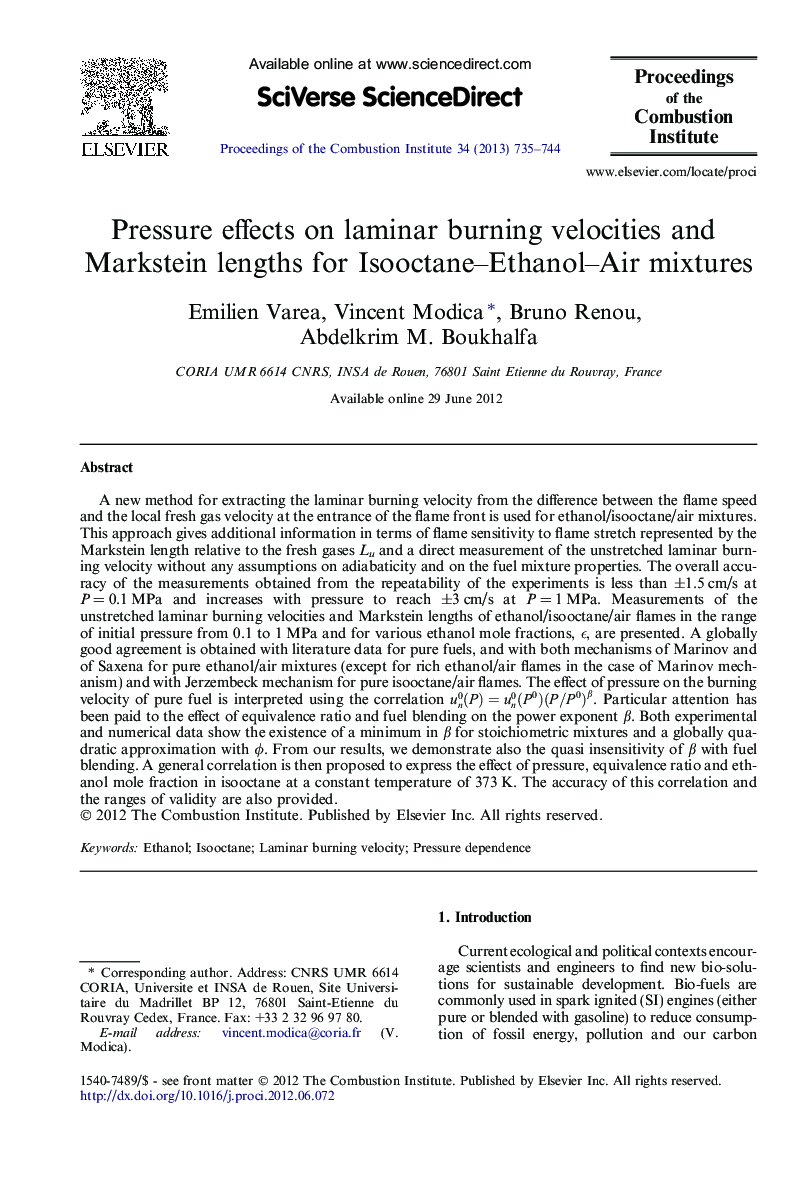| Article ID | Journal | Published Year | Pages | File Type |
|---|---|---|---|---|
| 241178 | Proceedings of the Combustion Institute | 2013 | 10 Pages |
A new method for extracting the laminar burning velocity from the difference between the flame speed and the local fresh gas velocity at the entrance of the flame front is used for ethanol/isooctane/air mixtures. This approach gives additional information in terms of flame sensitivity to flame stretch represented by the Markstein length relative to the fresh gases Lu and a direct measurement of the unstretched laminar burning velocity without any assumptions on adiabaticity and on the fuel mixture properties. The overall accuracy of the measurements obtained from the repeatability of the experiments is less than ±1.5 cm/s at P = 0.1 MPa and increases with pressure to reach ±3 cm/s at P = 1 MPa. Measurements of the unstretched laminar burning velocities and Markstein lengths of ethanol/isooctane/air flames in the range of initial pressure from 0.1 to 1 MPa and for various ethanol mole fractions, ∊ , are presented. A globally good agreement is obtained with literature data for pure fuels, and with both mechanisms of Marinov and of Saxena for pure ethanol/air mixtures (except for rich ethanol/air flames in the case of Marinov mechanism) and with Jerzembeck mechanism for pure isooctane/air flames. The effect of pressure on the burning velocity of pure fuel is interpreted using the correlation un0(P)=un0(P0)(P/P0)β. Particular attention has been paid to the effect of equivalence ratio and fuel blending on the power exponent β. Both experimental and numerical data show the existence of a minimum in β for stoichiometric mixtures and a globally quadratic approximation with ϕ. From our results, we demonstrate also the quasi insensitivity of β with fuel blending. A general correlation is then proposed to express the effect of pressure, equivalence ratio and ethanol mole fraction in isooctane at a constant temperature of 373 K. The accuracy of this correlation and the ranges of validity are also provided.
